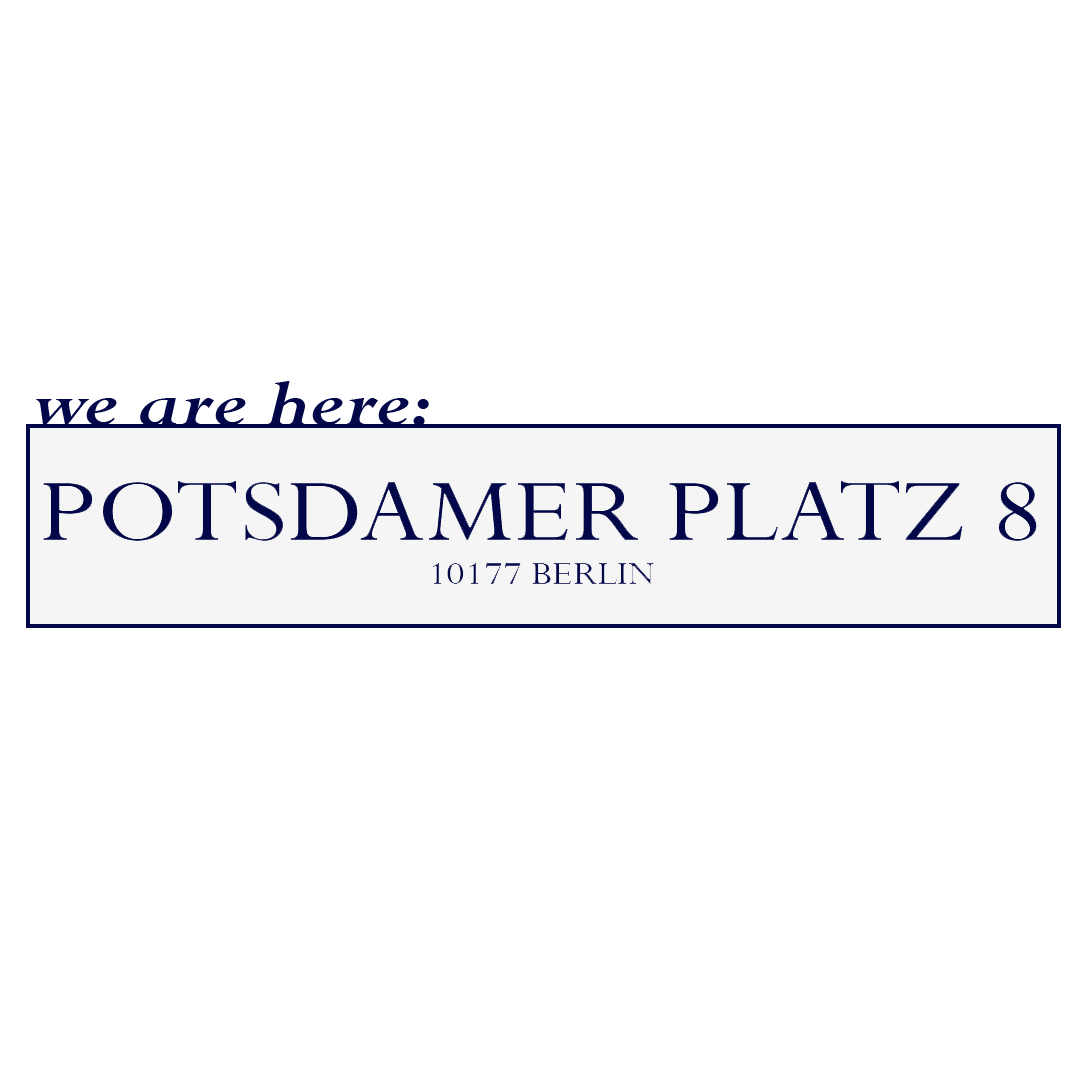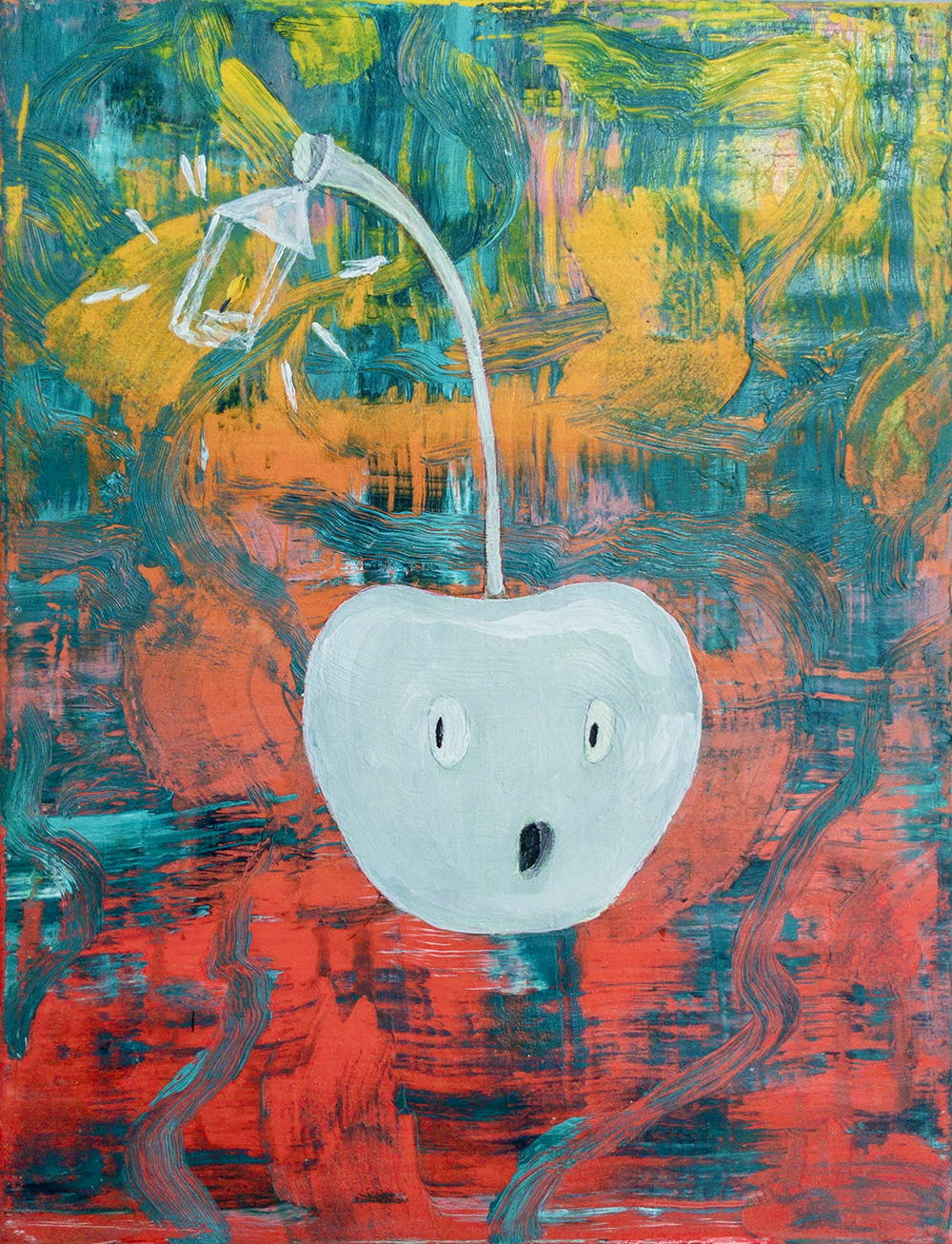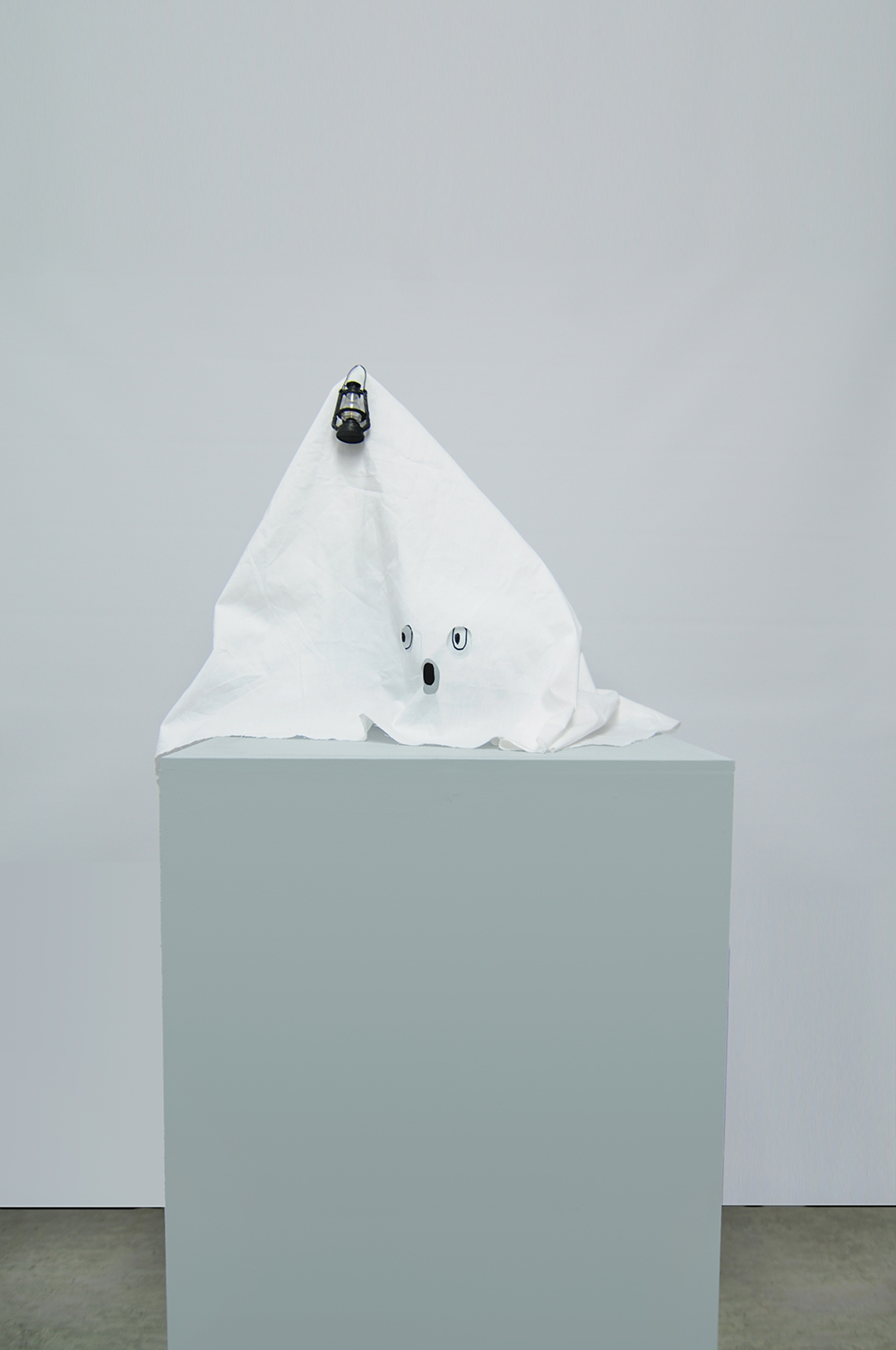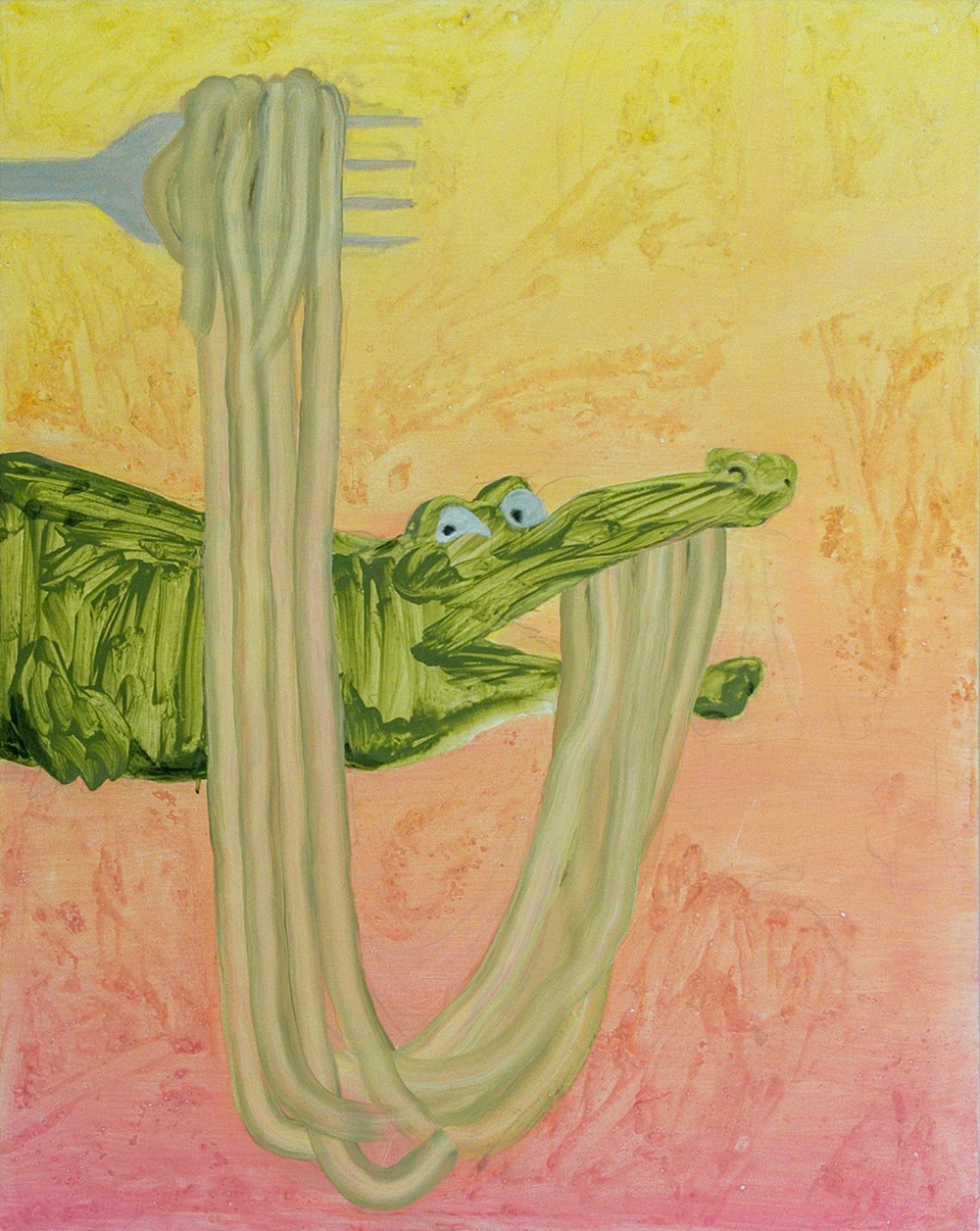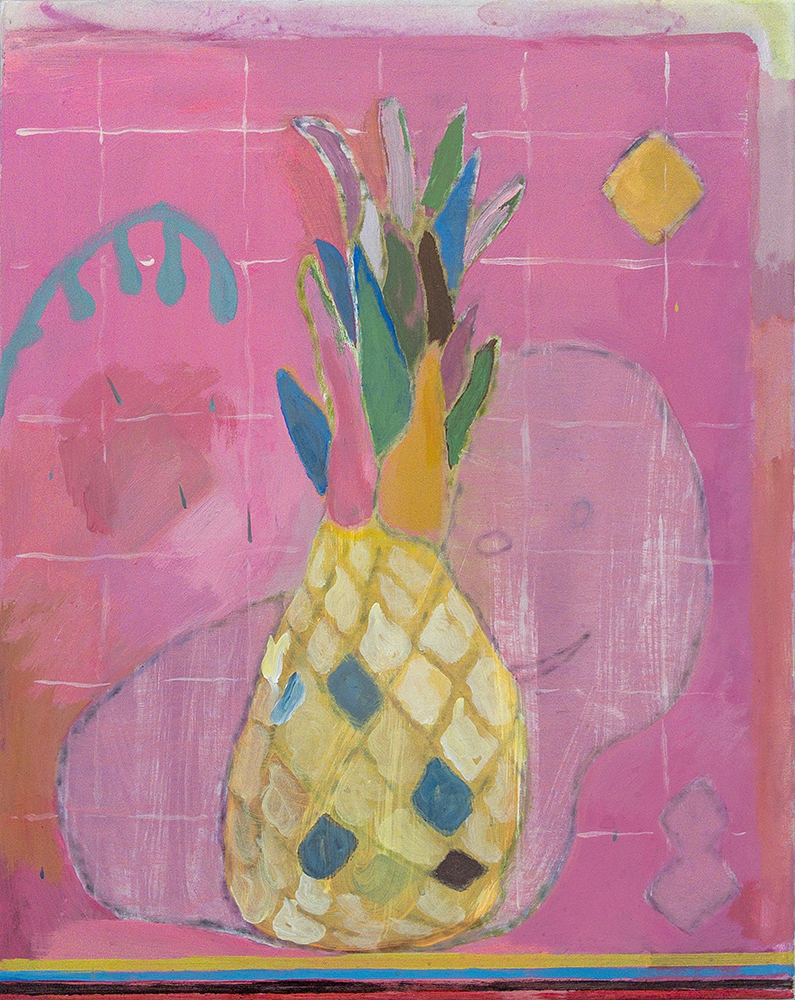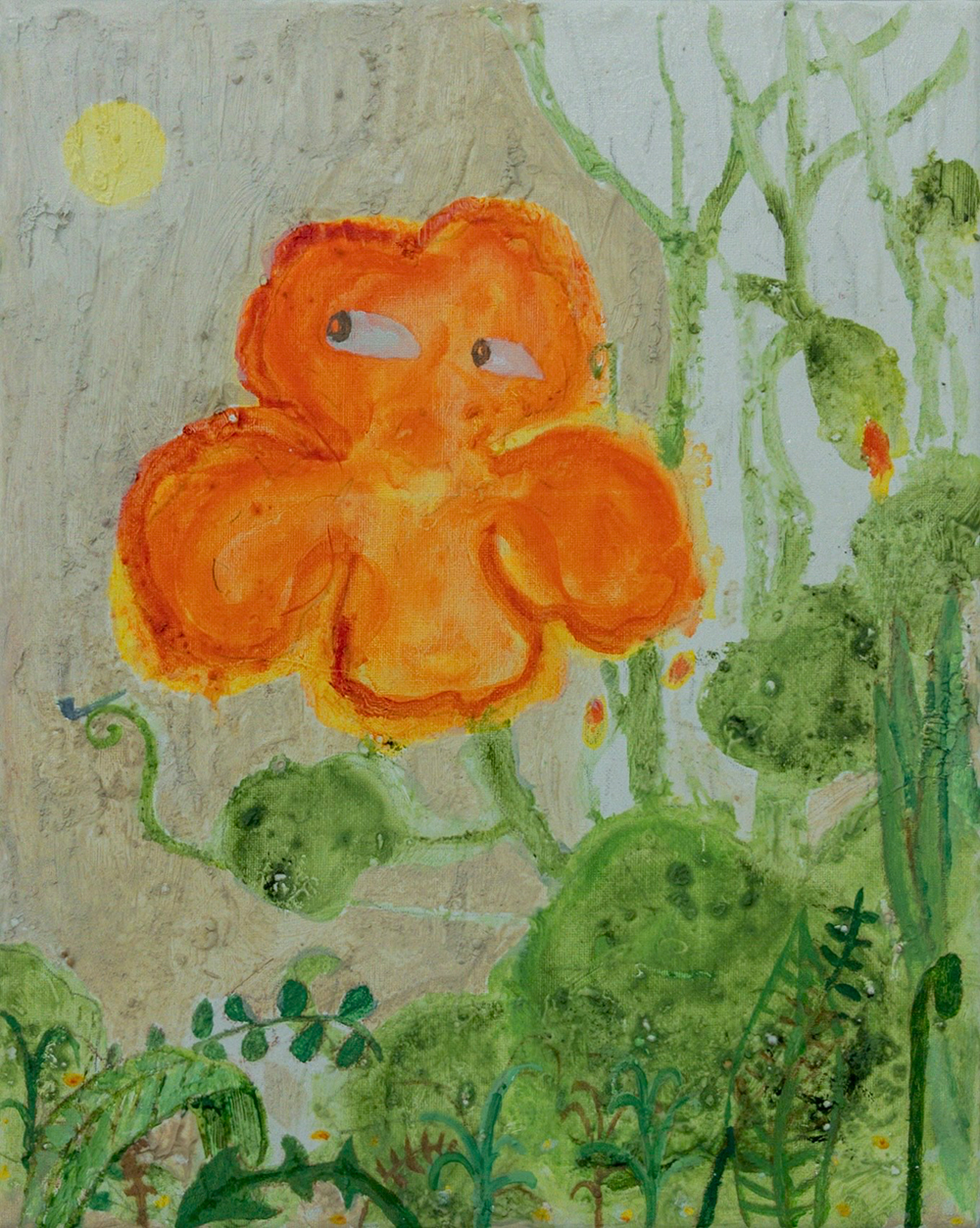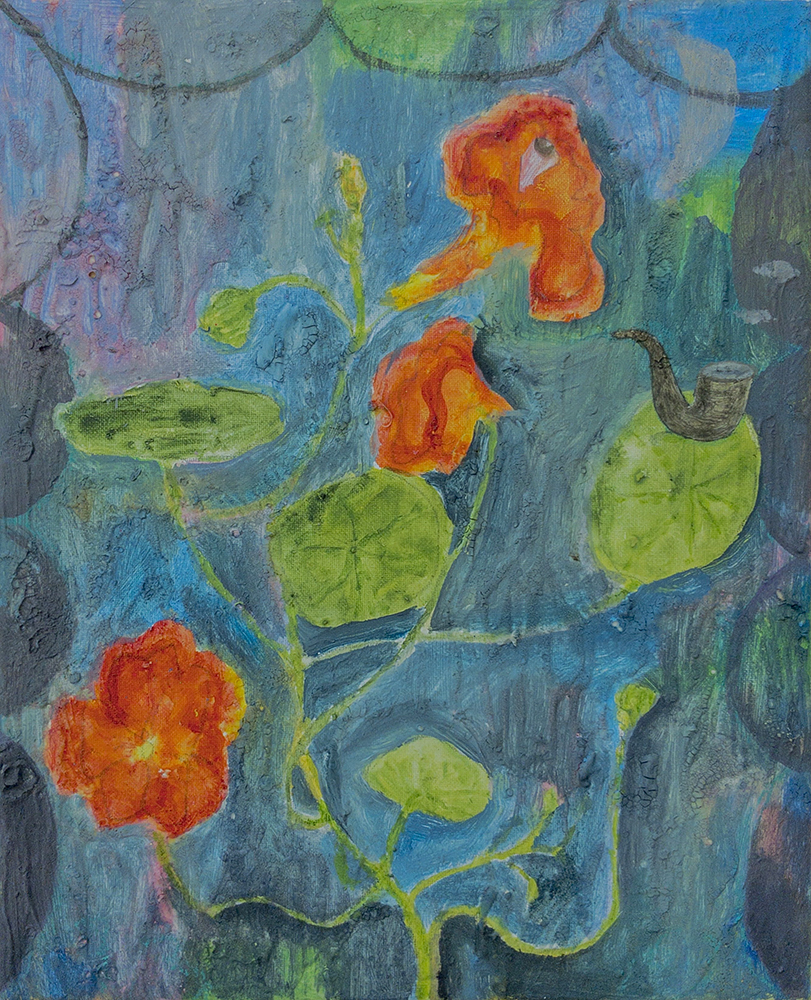Past
Andy Best
Hey, Jupiter
Friday Night POSITIONS
on 17 September from 6 pm
You are cordially invited to join the openings and exhibitions
of our Berlin galleries on Friday evening as part of Berlin Art Week.
Hey, Jupiter
The works in Andy Best’s exhibition Hey, Jupiter are drawn from an algorithm that constantly spiders the artist’s archives, recreating images from different elements. Both as a mechanical and manipulatable starting point, Best’s work is a contemporary take on “höhere Wesen befehlen”, and continues the artist’s interest in both process and agency in contemporary painting.
Whilst all creative acts stem from a recombination of pre-existing elements, Best actively seeks out the emotional potentiality of such an approach.
Frequently drawing upon chance systems, his works seem consistently attracted to unlikely states of being. Whether a spaghetti-toothed crocodile, an easy to play heart-shaped mini golf course, or a ghost smiling from behind a pineapple, Best’s outcomes do not seem precalculated. Rather, they seem the result of an unpredictable process, presenting meanings to us both grounded in the familiar but also deeply mysterious.
The title of the exhibition refers to the events leading up to the writing of Tori Amos’ song Hey Jupiter. During her 1990s Under the Pink tour, Amos encountered a ghost in her hotel room, who from the foot of her bed presented her with new songs. By way of explanation, the ghost eventually drew a picture of the Earth, locked into an ancient relationship with the planet Jupiter, on a fogged up bathroom mirror.
Jupiter is a unique planetary agent, perhaps the oldest in our solar system, and heavier than all the other planets combined. Named Brihaspati by Vedic astrologers - the teacher of the gods - it was also referred to as rishi or guru, the latter literally translating as “the Heavy One". Indeed, Jupiter’s gravitational pull is large enough to measurably impact the motion of our sun. Jupiter also impacts the Earth, through its bending trajectories of stray asteroids and comets towards or away from us. It has been called our solar system’s “great vacuum cleaner” for its ability to draw everything into it.
Similarly, the works in this exhibition pull the viewer into deep collective memory, drawn from both art history, popular culture, and the overlooked detail of everyday life. In space travel also, we use Jupiter’s gravity to sling probes outwards as well, towards the most distant of locations.
Jupiter’s own surface is not solid - its gaseous bands constantly in motion. In a parallel to the continual shifting of Best’s painting surfaces, the underlying algorithmic structure of the works are rendered invisible almost through gestural brush work, and by the artist’s layering of seemingly antagonizing colours and techniques. The visual outcome is a dense spectacle of combined symbols, imagery and ideas.
Computer algorithms are often perceived as cold and abstract, without fixed, real world physical manifestations or preferences. Yet today they have become as impactful as the Roman king of the gods Jupiter, who likewise altered the lives of mortals from his distant home in the clouds.
We see here, then a parallel to our own turbulent age. Impacted daily by Big Tech’s algorithms, we may feel the weight of these hidden forces. However, Best’s work also offers us a model of creatively engaging with this process. In this way, we are perhaps able to glimpse attributes we once also ascribed to Jupiter: abundance, influence, healing, and creative energy.
Charlie Stein, Berlin 2021
